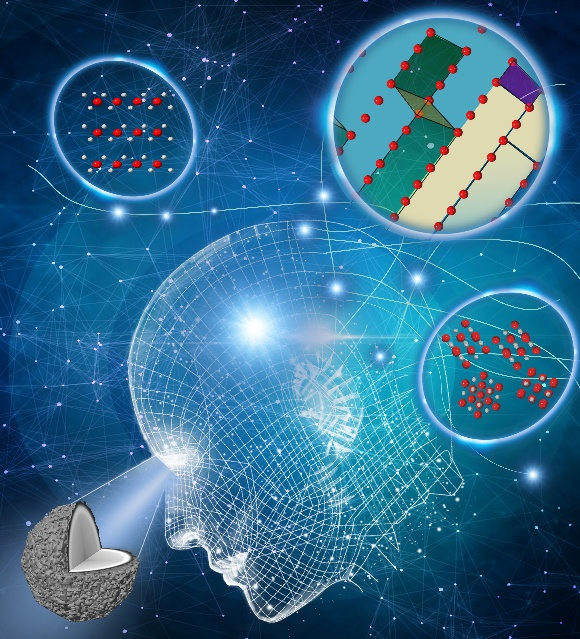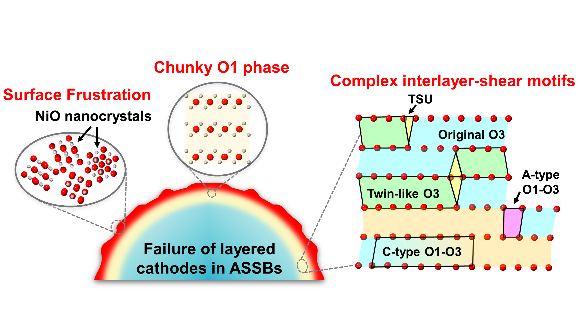Scientists Decipher the Atomic-Scale Failure Mechanisms of Layered Oxide Cathodes in All-Solid-State Batteries
The research discovered that the coupling of surface frustration and interlayer-shear-induced phase transformation exacerbates the chemomechanical breakdown of layered cathodes. Surface frustration, a phenomenon previously unobserved in liquid electrolyte-based LIBs, emerges through electrochemical processes involving surface nanocrystallization coupled with rock salt transformation. Simultaneously, delithiation-induced interlayer shear leads to the formation of chunky O1 phases and intricate interfaces/transition motifs, distinct from scenarios observed in liquid electrolyte-based LIBs.
This work provides an unprecedented atomic-scale understanding of the degradation mechanisms of layered oxides in ASSBs and underscores the pivotal role of advanced electron microscopy techniques in addressing core scientific issues in the energy field.

Conceptual Diagram of Resolving Atomic-Scale Failure Mechanisms of Layered Cathodes in ASSBs Using AI-TEM Technique (Image by IMR)

Schematic Overview of the Degradation Mechanisms of Layered Oxide Cathodes in ASSBs (Image by IMR)
Contact:
WANG Chunyang
Institute of Metal Research, Chinese Academy of Sciences
Phone:86-24-23978041
Email:wangchunyang@imr.ac.cn